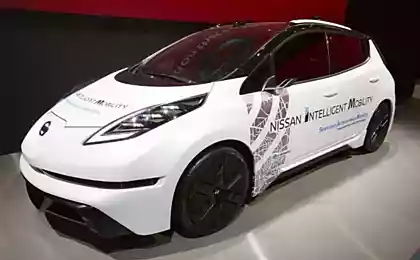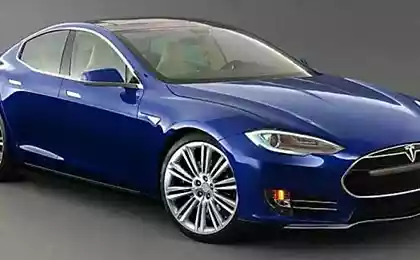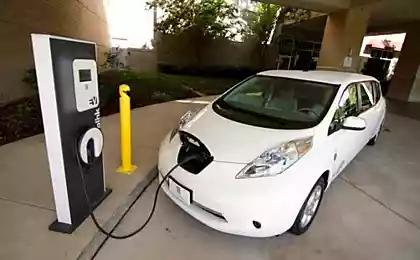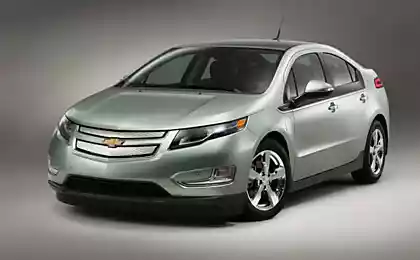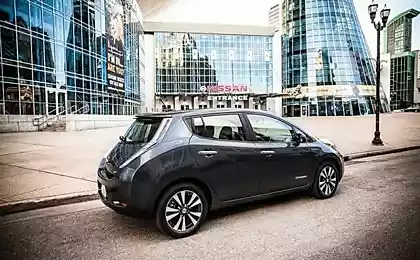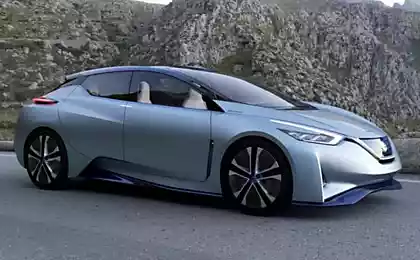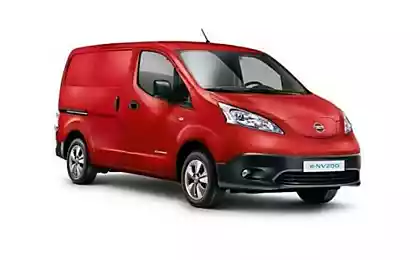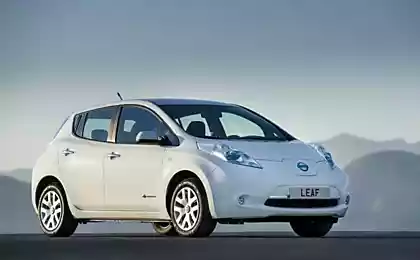573
Nissan Leaf vs Chevy Volt
Over the past five years, the Nissan Leaf and the Chevrolet Volt was the best-selling electric cars. Sales of their Leaf electric car is now slightly higher than the range-extended electric Volt, but the two machines have demonstrated very different approaches of driving on electricity.
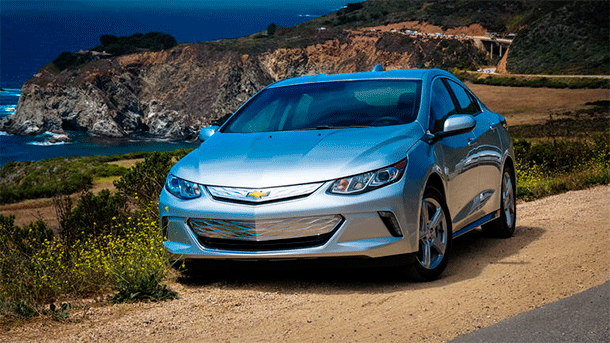
For 2016, however, the game has changed. Updated Chevrolet Volt faces off with the Nissan leaf, which looks identical to the previous model, but offers a new in-class range of 170 km — a significant increase from last year's 135 miles. The new Volt also adds electric miles: 85 vs 61 km the first generation model.
The added range is expected to increase sales of the Nissan Leaf, which is already reduced in the past 18 months. And the new Volt, which is sleeker, better equipped, faster, quieter and more powerful, needs to do the same for Chevrolet.
Compare designBodice features a compact size car, but interior volume is a mid — size car — and it can fit five adults. The Chevy Volt is less internal space and it has a fifth "seat" is a gentle hump on the battery with the seat belt but no head restraint. This is a good choice for a short trip with flexible teenager, but it is difficult to accommodate a large adult.

The Nissan Leaf is polarizing appearance: some consider it ugly, others futuristic. This is a more upright car with curvaceous, lowered nose and high vertical tail lights. The new Volt is now much sleeker and looks low, with a steep slant of the windshield, angular lines accented, almost horizontal ending high back that is still pretty well integrated into its shape.
Comparison of the characteristics of the Nissan Leaf and the Chevy Voltwhile they show different approaches to drive on electricity, each car with front wheel drive from a primary or a fully electric motor. Each has an onboard charger, so that owners can plug them in the charging station or wall outlet to recharge its lithium-ion battery.
The Nissan leaf still presents no special difficulties and it is easier to understand in some ways than the Volt. A "pure" electric car powered by its battery, while the Chevy requires more detailed explanation. It works completely on battery power for about half of the range Leaf. Then he shifts to drive as a hybrid of more than 500 kilometers in the combined fuel consumption of 5.74 l/100 km.
On the road the new Volt is surprisingly smooth and quiet even when it is its engine range extension — to a much greater extent than the previous generation, which was also quite good compared to hybrids like the Toyota Prius. The Nissan Leaf is also quiet inside until about 65 mph, when wind and tire noise start to seep into the cabin. But handling and grip, the Volt is a higher quality, with a sporty feel compared to the unremarkable driving Leaf.
While the supply of the electric range of 85 miles may not seem like much, Chevrolet reports that data from previous Volt and its projections show that nine out of 10 trips in the new Volt may be conducted solely on electric power — saving is much less than half the cost of gasoline. For 78 percent of drivers who never drive more than 65 km a day, charging a Chevy Volt every night can effectively run it forever as the electric car — never switch on the gasoline engine.
Drivers of the Nissan Leaf have to think about how they travel and how people use their electric cars. A new, more long-range battery pack gives the Leaf an effective range somewhere between 110 and 175 km, maybe more, if you accelerate slowly and smoothly and use a Bodice in very hot or very cold weather.
Chargingthe Majority of Volt owners charge their car overnight from a power supply of 120 volts, and night charging Nissan Leaf largely requires the use of 220-volt charging station level 2. Power on-Board charger Chevrolet Volt 3.6 kW in the Leaf at 6.6 kW. In practice, this means that a full recharge each car will take about five hours at 220 volts.
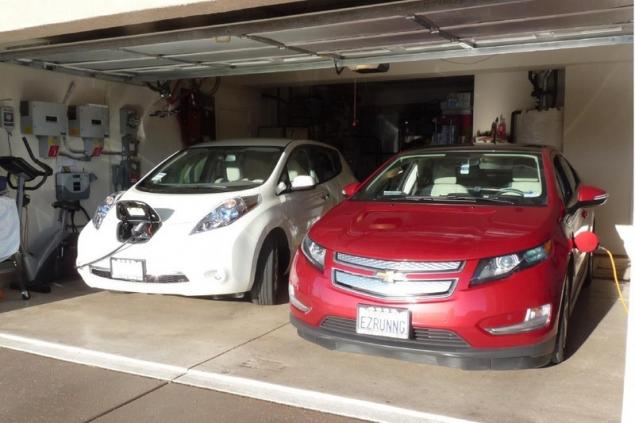
The price of the Nissan Leaf and Chevrolet Voltbase Price of the model S electric vehicle Nissan Leaf, which retains the old 135 km battery, starts just under $ 30000; Volt starts at nearly $ 4000 higher. Fully equipped models of each car can add another $ 10000.
Summing up the170-mile Nissan Leaf is not only roomy commuter car, but can now cope with an unplanned trip with much less range anxiety. He has five seats and a large Luggage compartment.
On the other hand, Chevrolet Volt better control and he just removes the range anxiety. In rare cases, when the engine is turned on, it gets 5,74 liters per 100 kilometers is better than any pure gasoline model on the market and his appearance gained wide popularity. This is the best option for drivers who travel a lot or have less predictable patterns of travel.
Choosing any vehicle pay attention to much more things than solely the price and performance. Choose the one that is best for you, and it will depend on how you plan to use the car. Additional monitoring systems of transport can be found on http://gpsmonitoring-transporta.ru/
published
P. S. And remember, only by changing their consumption — together we change the world! ©
Join us in Facebook , Vkontakte, Odnoklassniki
Source: ekomob.ru/nissan-leaf-ili-chevrolet-volt.html

For 2016, however, the game has changed. Updated Chevrolet Volt faces off with the Nissan leaf, which looks identical to the previous model, but offers a new in-class range of 170 km — a significant increase from last year's 135 miles. The new Volt also adds electric miles: 85 vs 61 km the first generation model.
The added range is expected to increase sales of the Nissan Leaf, which is already reduced in the past 18 months. And the new Volt, which is sleeker, better equipped, faster, quieter and more powerful, needs to do the same for Chevrolet.
Compare designBodice features a compact size car, but interior volume is a mid — size car — and it can fit five adults. The Chevy Volt is less internal space and it has a fifth "seat" is a gentle hump on the battery with the seat belt but no head restraint. This is a good choice for a short trip with flexible teenager, but it is difficult to accommodate a large adult.

The Nissan Leaf is polarizing appearance: some consider it ugly, others futuristic. This is a more upright car with curvaceous, lowered nose and high vertical tail lights. The new Volt is now much sleeker and looks low, with a steep slant of the windshield, angular lines accented, almost horizontal ending high back that is still pretty well integrated into its shape.
Comparison of the characteristics of the Nissan Leaf and the Chevy Voltwhile they show different approaches to drive on electricity, each car with front wheel drive from a primary or a fully electric motor. Each has an onboard charger, so that owners can plug them in the charging station or wall outlet to recharge its lithium-ion battery.
The Nissan leaf still presents no special difficulties and it is easier to understand in some ways than the Volt. A "pure" electric car powered by its battery, while the Chevy requires more detailed explanation. It works completely on battery power for about half of the range Leaf. Then he shifts to drive as a hybrid of more than 500 kilometers in the combined fuel consumption of 5.74 l/100 km.
On the road the new Volt is surprisingly smooth and quiet even when it is its engine range extension — to a much greater extent than the previous generation, which was also quite good compared to hybrids like the Toyota Prius. The Nissan Leaf is also quiet inside until about 65 mph, when wind and tire noise start to seep into the cabin. But handling and grip, the Volt is a higher quality, with a sporty feel compared to the unremarkable driving Leaf.
While the supply of the electric range of 85 miles may not seem like much, Chevrolet reports that data from previous Volt and its projections show that nine out of 10 trips in the new Volt may be conducted solely on electric power — saving is much less than half the cost of gasoline. For 78 percent of drivers who never drive more than 65 km a day, charging a Chevy Volt every night can effectively run it forever as the electric car — never switch on the gasoline engine.
Drivers of the Nissan Leaf have to think about how they travel and how people use their electric cars. A new, more long-range battery pack gives the Leaf an effective range somewhere between 110 and 175 km, maybe more, if you accelerate slowly and smoothly and use a Bodice in very hot or very cold weather.
Chargingthe Majority of Volt owners charge their car overnight from a power supply of 120 volts, and night charging Nissan Leaf largely requires the use of 220-volt charging station level 2. Power on-Board charger Chevrolet Volt 3.6 kW in the Leaf at 6.6 kW. In practice, this means that a full recharge each car will take about five hours at 220 volts.

The price of the Nissan Leaf and Chevrolet Voltbase Price of the model S electric vehicle Nissan Leaf, which retains the old 135 km battery, starts just under $ 30000; Volt starts at nearly $ 4000 higher. Fully equipped models of each car can add another $ 10000.
Summing up the170-mile Nissan Leaf is not only roomy commuter car, but can now cope with an unplanned trip with much less range anxiety. He has five seats and a large Luggage compartment.
On the other hand, Chevrolet Volt better control and he just removes the range anxiety. In rare cases, when the engine is turned on, it gets 5,74 liters per 100 kilometers is better than any pure gasoline model on the market and his appearance gained wide popularity. This is the best option for drivers who travel a lot or have less predictable patterns of travel.
Choosing any vehicle pay attention to much more things than solely the price and performance. Choose the one that is best for you, and it will depend on how you plan to use the car. Additional monitoring systems of transport can be found on http://gpsmonitoring-transporta.ru/
published
P. S. And remember, only by changing their consumption — together we change the world! ©
Join us in Facebook , Vkontakte, Odnoklassniki
Source: ekomob.ru/nissan-leaf-ili-chevrolet-volt.html
